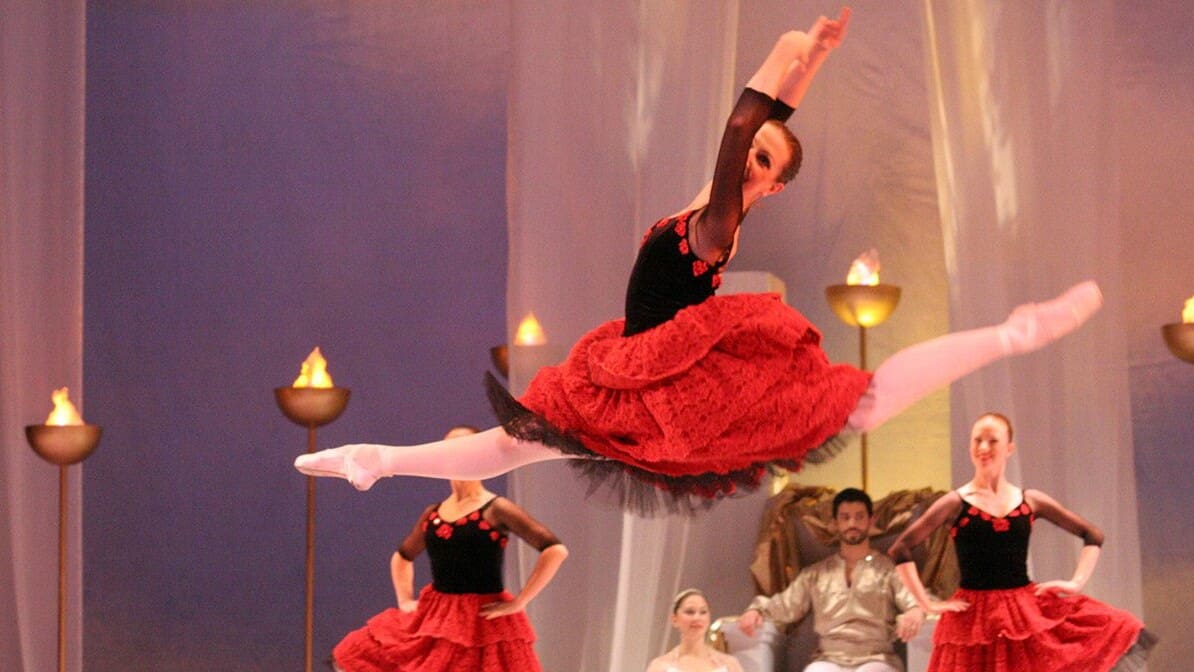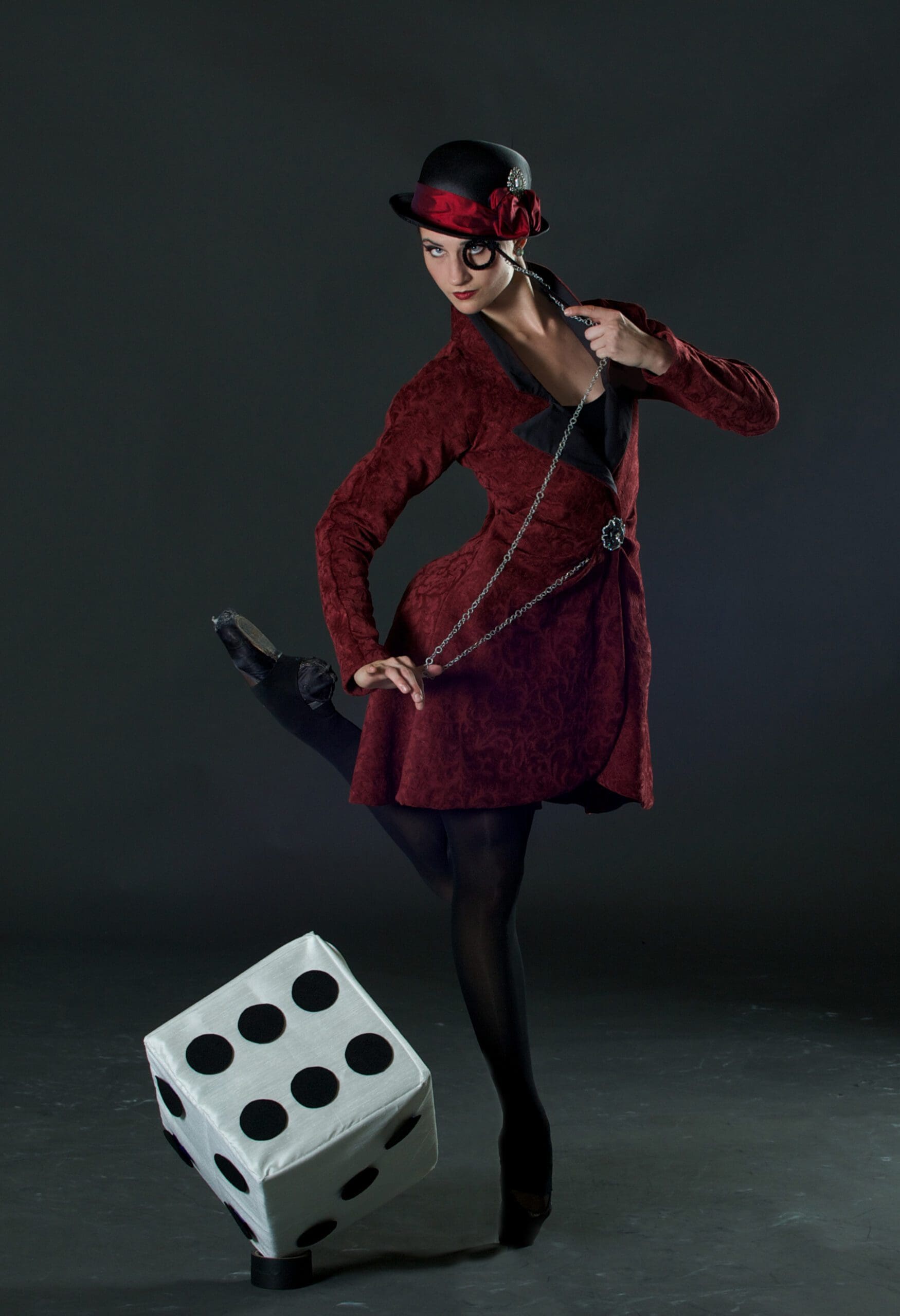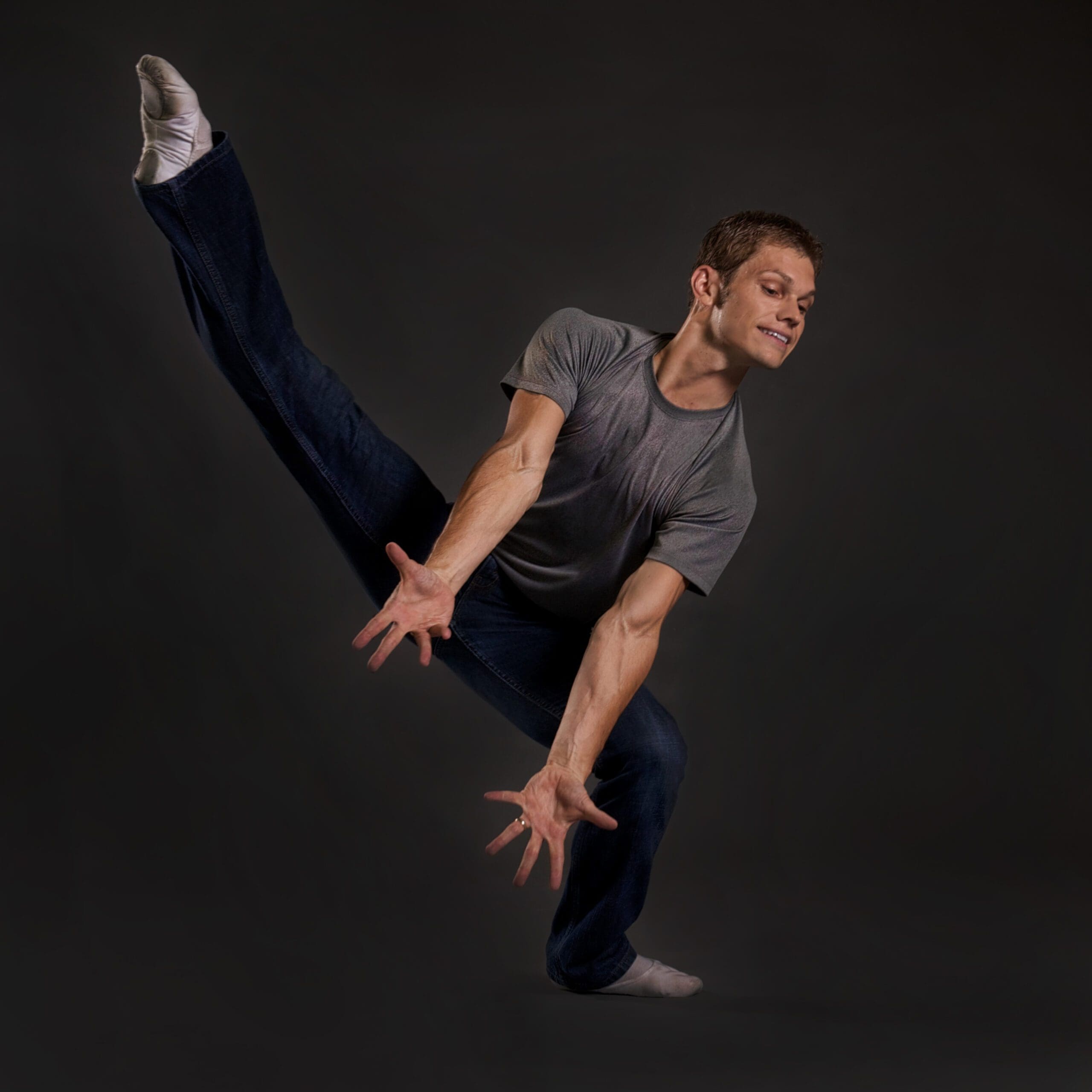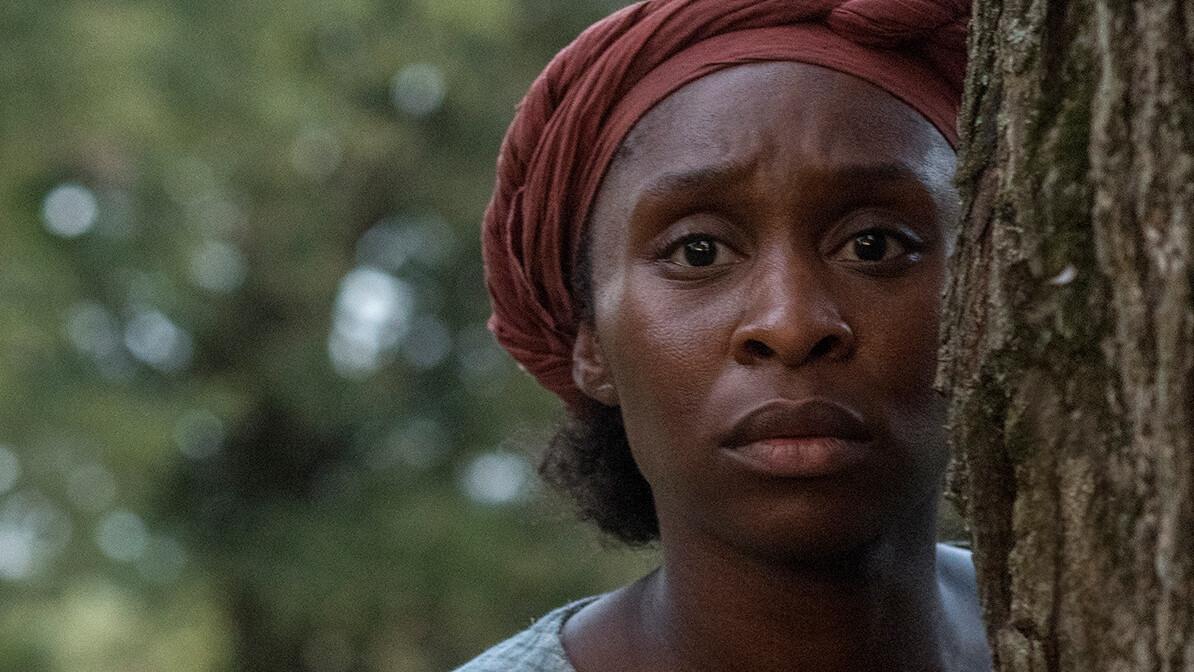- Home
- Entertainment
- Dancing for the Glory of God (Part 2)

Dancing for the Glory of God (Part 2)
![]() John Farrell: I was reading the bios of the staff at Ballet Magnificat and it was impressive to see that most had some type of previous training at Ballet Magnificat. It was really cool to see that they not only had been students, but now they were back as faculty or administration. That just goes a long way in showing that there are people that believe in what you’re doing and it’s an awesome thing to have.
John Farrell: I was reading the bios of the staff at Ballet Magnificat and it was impressive to see that most had some type of previous training at Ballet Magnificat. It was really cool to see that they not only had been students, but now they were back as faculty or administration. That just goes a long way in showing that there are people that believe in what you’re doing and it’s an awesome thing to have.
Keith Thibodeaux: That’s exactly right. Our professional company comes from the training program. Somebody can’t just show up off the street, no matter how good they are in ballet and say, “Can I come in the company?” First of all, we’ll ask, “Are you a believer?” We really look into what kind of believer they are and all that. Then they have to train here two to three years, and then they get chosen from the top training level. We choose from that group of people for the company.
Some of them are in the company for could be five, six years traveling with the company performing and ministering. Then we hire them as a teacher or School of the Arts director or here in the office as a tour director. So, it’s neat how we don’t really have outside people come in off the street and not have some time here to learn what this is about.
An International Presence
JF: What has expanding internationally allowed your company to do that it would’ve otherwise not been able to do if it had never expanded to a place like Brazil?
Keith: The whole world is open. We’ve been to China twice. We’ve been to Israel probably six times. In fact, we’re invited to go back to Israel. Along with Israel, we’ll probably be going to Kosovo and North Macedonia.
It’s allowed us to do things that are brand new in places where people have never seen it. Over here, people have seen more dance, even Christian dance and churches and different things like that, but over there it’s brand new. Like in Europe. We pioneered Europe.
One of our dancers who is the choreographer that choreographed a lot of what we’ve done in the story ballets has moved on and started his own ministry that is ministering to the 10 million people in the Czech Republic that don’t know the Lord. We were able to go into theaters with audiences that would never go into a church, but they came to see an American company. China was the same way. Two times in China we were in a place called Suzhou, and this is a communist nation. We could go places that a lot of people can’t go.
JF: I imagine that by opening up this facility in Brazil that it’s also helped you increase your international presence in the ballet community.
Keith: Exactly. People know who we are. In the US a lot of mainstream companies know who we are, like my wife, Kathy. She’s well-known in the ballet world. Ballet Magnificat, itself, is well known. People have heard of it or know about it. It has a good reputation depending on where you fall as a believer or nonbeliever. It still has a good reputation.
 JF: Are there any plans in the future to set up facilities in other countries outside of just touring?
JF: Are there any plans in the future to set up facilities in other countries outside of just touring?
Keith: We’ve got our hands full around here. We want to be open to wherever the Lord wants us to go and to take advantage of any opportunity that comes our way. We don’t have any current plans other than where we are now here in the US and Brazil, but like I said, opportunities come and we want to make sure we make the right decisions when they do come.
JF: You attract a lot of ballerinas or dancers from across the nation and around the globe. What’s the percentage between local and national participants versus international?
Keith: We have various internationals in our company here in the US. We’ve had Chinese. We’ve had German. We’ve had Polish, and right now we’ve got two South Africans that are in the company. They’re our international girls. They have an English accent, so they’re very interesting. But in the workshop, for any year, I would say it could be anywhere from 8 to 10 percent internationally.
Starting a Trend
JF: Thinking back to 1986 when Kathy founded the company, is there anything that you or her would’ve done differently? I know she said she had a vision or a prophecy from God about opening this facility. Is this what she envisioned or is there more to it?
Keith: I think going back to the opportunities that come up people come up with different ideas and visions and they could be from the Lord, they could be from the person themselves. So, we’d go down some little trail and say, “Oh, well this didn’t work out. So, we’ll go back to the main trail and see what’s going on.” But we just had a vision in the very beginning to praise His name with the dance and have a company that would praise His name and do programs and just the simplicity of all that.
I think it’s more like a vision that’s unfolding as you go. You do have like a grand, spiritual type impression of what the vision is. You don’t really know. You can’t really define it. All you know is you kind of see it in the spirit and then you just do what you know to do and take it day by day. The Lord is the one that unfurls the vision.
JF: I believe your company was one of the first Christian ballet companies, if not the first. How has the ballet industry embraced Christianity in the movement, if you want to call it that, to have more faith-based ballet companies? Have there been other companies that have since started with the hopes of replicating your success and following your model? 
Keith: There have been, yeah. When we started out, there were a couple of individuals who were Christian dancers. There weren’t very many ensembles or smaller groups out there at all. It’s just very different. We are, I guess, the most prominent of these groups, and a lot of Christian dance companies have spun off Ballet Magnificat. We have one in Washington state. We have one in upstate New York. We have one in Missouri. We have one in Colorado, and there’s one in Chattanooga, Tennessee.
Really, these are people that have been here, stay in our training program and, in a lot of cases, our company, and they have gone on to start a Christian ballet company in another city. There’s one in Chicago. And there are people who are not really connected with us that had some sort of a dance ministry back in the day and have gone on to have their own vision.
JF: What roadblocks or skepticism, from both secular and religious organizations, have Ballet Magnificat encountered along the way?
Keith: Well, in the secular part, the fact that we’re a Christian ballet company, and we are witnesses of Jesus and His gospel. I think that’s one of the biggest, and basically our standards as a company. There are some people that would feel very uncomfortable if they were here because it’s a very God-centered place.
On the Christian part of it, there were people, like in churches, that would say, “You can’t use dance for the Lord. That’s of the devil. You got girls dancing, costumes,” and different things like that. We’re probably one of the more modest ballet companies out there as far as what kind of costumes we have so it’s very tasteful, but very modest. It’s not modest to the point where it looks kind of weird, but it’s also not seductive either in a worldly way.
The fact that we’re Christian, it keeps you from getting a lot of support from the arts. That kind of thing. So, we don’t really have any real support from the National-Endowment-for-the-Arts-type thing. We do get some local stuff sometimes, but it’s always couched with, “You can’t mention the name Jesus” and all that. A lot of times that just falls off of our map and the Lord takes care of it anyway. We’re not worried about it.
Trending Now
Sign up today for your Inspiration Today Daily Newsletter
Supercharge your faith and ignite your spirit. Find hope in God’s word. Receive your Inspiration Today newsletter now!
John Farrell
John Farrell serves as the Digital Content Manager at Inspiration Ministries, where he oversees the planning, organization, and management of website content to support the ministry's global digital outreach. With a strong background in writing and editorial strategy, John ensures that the articles, devotionals, and discipleship resources on Inspiration.org are accurate, engaging, and aligned with the ministry's mission.
John has authored more than 1,000 articles, press releases, and features for Inspiration Ministries, NASCAR, Lionel, and Speed Digital. His versatility as a writer is also showcased in his 2012 book, The Official NASCAR Trivia Book: With 1,001 Facts and Questions to Test Your Racing Knowledge.
A graduate of Appalachian State University, John brings excellence and attention to detail to the digital experience at Inspiration Ministries. He lives in Concord, N.C., with his wife and two sons.
Related Articles
March 10, 2025
Finding Total Victory on the Road to Championship
I have been playing competitive golf for 55 years. Through the various stages of my life, my…
March 7, 2025
Average Joe Movie: SCOTUS, Praying Football Coach Backstory
When Coach Joe Kennedy knelt to pray at the 50-yard line after a high school football game, he had…
February 28, 2025
The Power of Story: A Muslim Journey to Hope
Storytelling is one of the oldest and most powerful ways to touch the human heart. Parents tell…
February 27, 2025
‘Harriet’ Movie: Courage, Freedom, Faith
Antebellum abolitionist Harriet Tubman had convictions and courage that helped free herself…
Next Steps To Strengthen Your Walk
Inspiration Today Newsletter
Supercharge your faith and ignite your spirit. Find hope in God’s word. Receive your Inspiration Today newsletter now!
Christian Articles
Find articles to strengthen your walk and grow your faith. We have a wide range of topics and authors for you.
Submit A Prayer Request
We are here for you. Simply click on the button below to reach us by form, email or phone. Together we will lift our hearts and voices with you in prayer.





